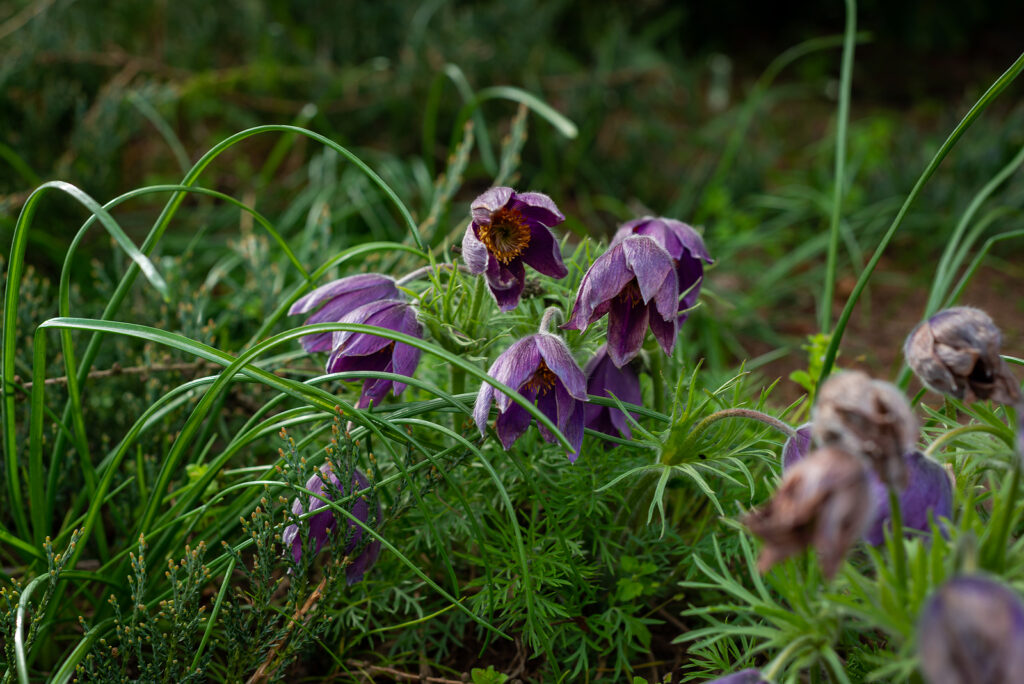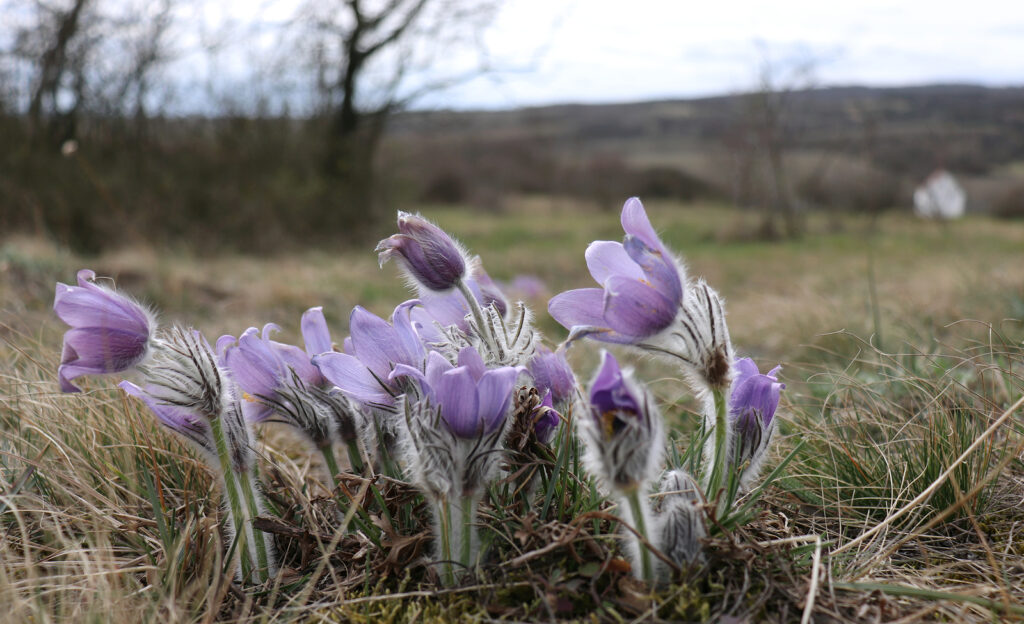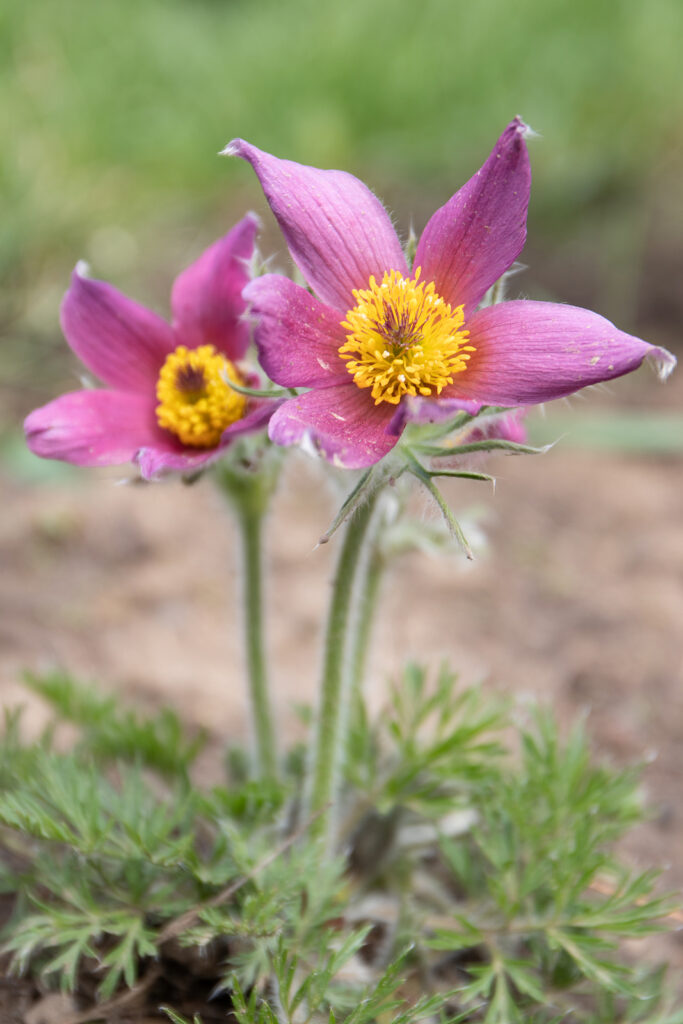Pulsatilla–commonly called pasque flower–bears nodding, cup-shaped flowers in shades of purple, red, pink, or white in spring. Flowers are followed by silky seed heads. Pulsatilla is a clump-forming perennial with feathery light green leaves that are silky when young.
Grow Pulsatilla in rock garden and scree beds where the flowers and fluffy seed heads will be easily noticed and make the best impact.
Pulsatilla is a genus of about 30 species of clump-forming, deciduous perennials with a coarsely fibrous rootstock. Contact with the sap of Pulsatilla may irritate the skin.

Get to know Pulsatilla
- Plant type: Perennial
- Growing Zones and range: Zones 4-8
- Hardiness: Half-hardy
- Height and width: 4 to 6 inches (10-15cm) tall and wide
- Foliage: Fern-like leaves are finely dissected
- Flowers: Deep purple, blue, white, or reddish 1 to 3-inch flowers
- Bloom time: Early spring
- Uses: Beds, borders, natural plantings
- Garden companions: Bulbs
- Common name: Pasque flower
- Botanical name: Pulsatilla vulgaris
- Family: Ranunculaceae
- Origin: Alpine meadows in Eurasia and North America
Where to plant Pulsatilla
- Plant Pulsatilla in full sun in Zones 4-6; plant in light shade in hot summer regions in Zones 7-8.
- Pulsatilla will grow in average, well-drained soil.

When to plant Pulsatilla
- Set Pulsatilla in the garden in spring.
Planting and spacing Pulsatilla
- Space Pulsatilla 6 inches apart.
How to water and feed Pulsatilla
- Pulsatilla need ample moisture; keep the soil evenly moist.
- Pulsatilla do not need fertilizer
Pulsatilla care
- Mulch around Pulsatilla to conserve soil moisture.
- Pulsatilla do not need deadheading or division. Pulsatilla will reseed on its own.
- Pulsatilla are prone to root rot in wet winter regions
Pulsatilla pests and diseases
- Pulsatilla can be attacked by snails and slugs.

Pulsatilla propagation
- Sow seed as soon as ripe in containers.
- Take root cuttings in winter.
Pulsatilla varieties to grow
- Pulsatilla alpina, alpine pasque flower, is a clump-forming perennial that bears cup-shaped white flowers followed by ornamental seed heads.
- P. patens, Eastern pasque flower, bears cup-shaped blue-violet, lilac, and sometimes yellowish-white flowers.
- P. vernalis bears bell-shaped white flowers.
- P. vulgaris, pasque flower, clump-forming perennial bears bell-shaped, silky flowers in shades of deep to pale purple and occasionally white; cultivars ‘Alba’ is white, ‘Azure’ is semi-double violet, ‘Polka’ is semi-double white.















